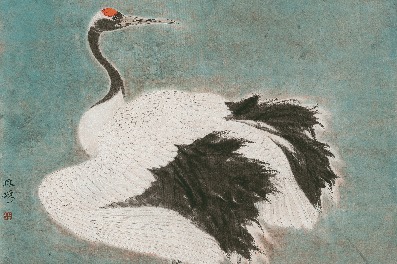Summer's night tales gave birth to monsters


Forgotten creatures of the Forbidden City come alive for the young
When Chang Yi was a little girl her father, an editor with People's Literature Publishing House, got her to read ancient Chinese classics.
It was hard work for one so young, but she managed to find fun in it.
In reading those books she often came across monsters that she had heard about from old people in the neighborhood where her grandfather lived.
It was not far from the Forbidden City in Beijing, and many residents in the hutong worked in the ancient palace. About 30 years ago the palace was a big park for little Chang. It took her only three minutes to walk from her grandfather's to Donghuamen, the east gate of the palace. The Forbidden City was Chinese imperial palace from 1420 to 1911.
On summer nights, when people living nearby gathered outside to keep cool, the grandmothers and grandfathers, many of whom used to be craftspeople in the palace, told legends, tales of horror and of monsters in the Forbidden City. Many of the monsters appeared as statues there.
Chang was fascinated by these monsters, and she was eager to find about their truth in ancient books, which became a great hobby of hers.
Some of her uncles worked in the ancient books department of the publishing house, so she was able to read books that could not be seen outside. As she grew up she amassed a great deal of knowledge about Chinese mythological monsters and their stories.
After she gave birth to a son she wanted to tell him those wonderful stories of the monsters that had gradually been forgotten by most Chinese people.
Once she was in the Forbidden City and heard a boy ask his grandfather about the little copper monsters on the red doors, and the grandfather said they were lions guarding the entrance.
"I couldn't help telling them they were not lions, but Jiao Tu, one of the nine sons of loong, a Chinese dragon (a mythological beast of tremendous power that gave birth to the Chinese nation) in ancient Chinese myths," she says.
When talk turns to the monsters, Chang becomes excited.
"Jiaotu was a quiet monster and disliked visitors or visiting other people," she says. "Its defensive power was so strong that few ghosts or evil spirits could match it, so in ancient times Chinese people liked to put them on doors to guard their houses."
After that experience, Chang found that while many people visit the Forbidden City every day, few notice those monsters or are aware of their stories, and many misidentify them.
In fact, through movies and TV many Chinese know more about monsters from Europe and the United States, she says. Others love Japanese monsters, which "in fact came from China",
Growing up reading and hearing about such mythological monsters, Chang decided to write their stories to give children a chance to learn about legends that have been passed on for thousands of years.
"I hope with my books that when children go to the Forbidden City they will find pleasure by relating the statues with their legends."





































